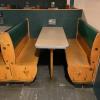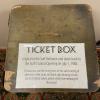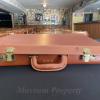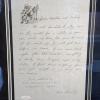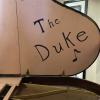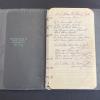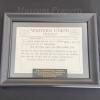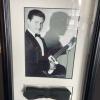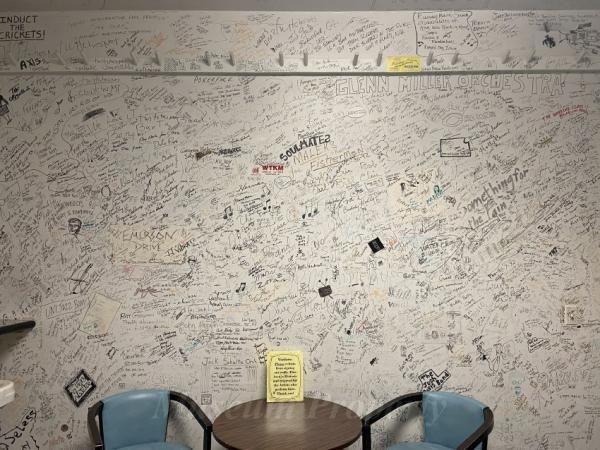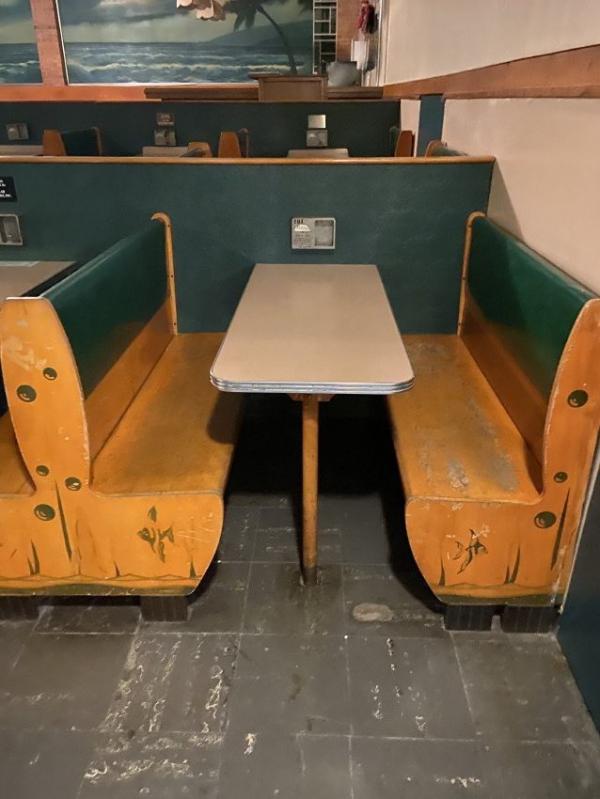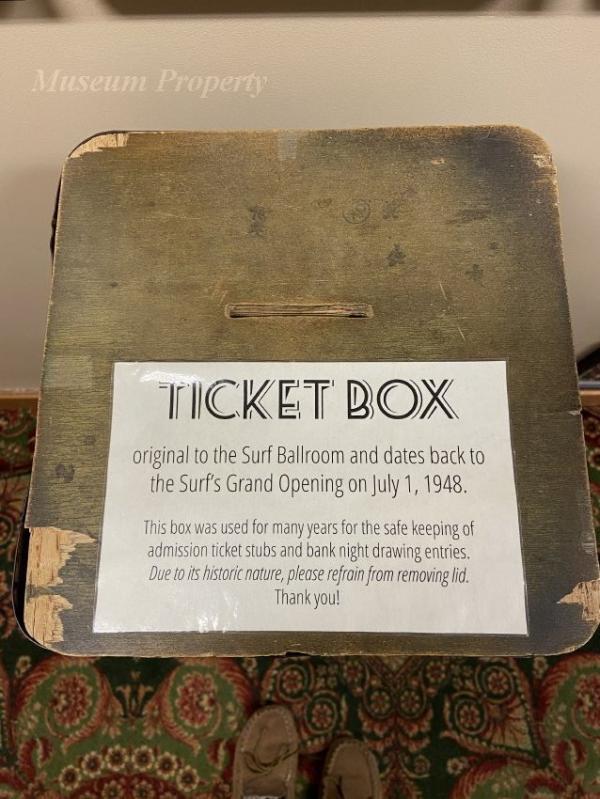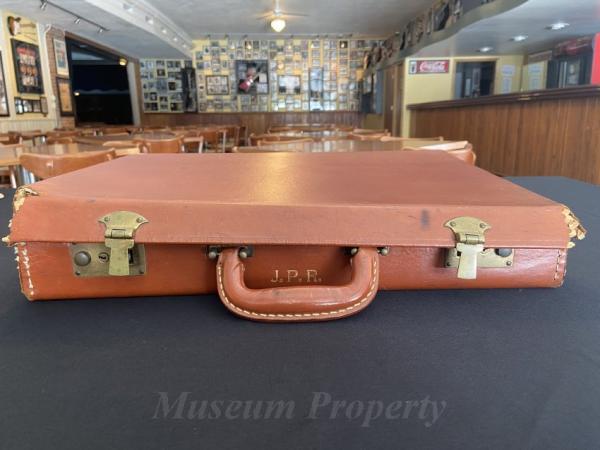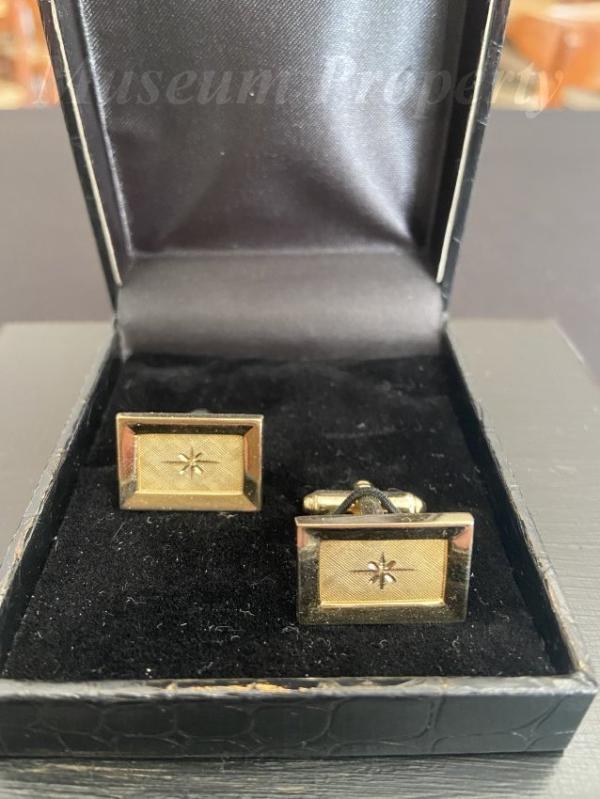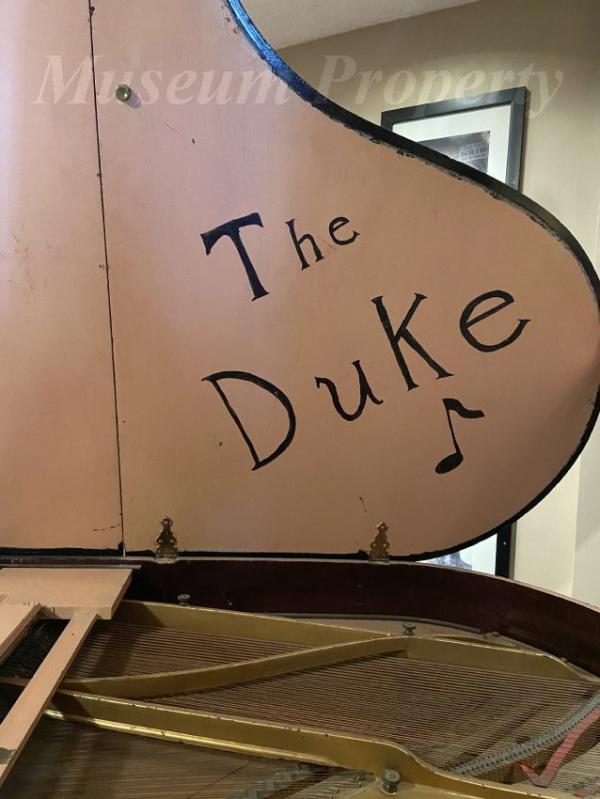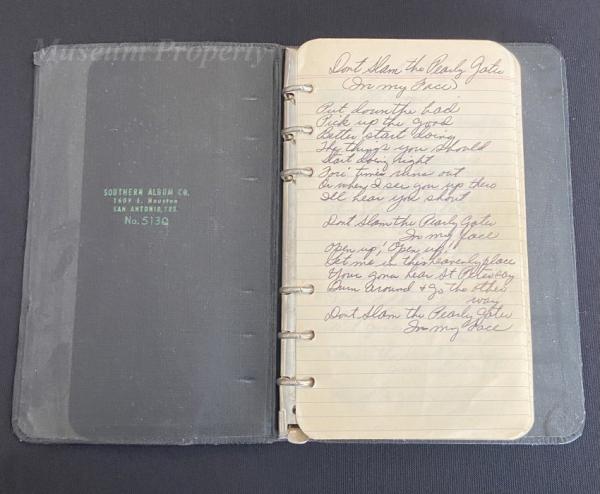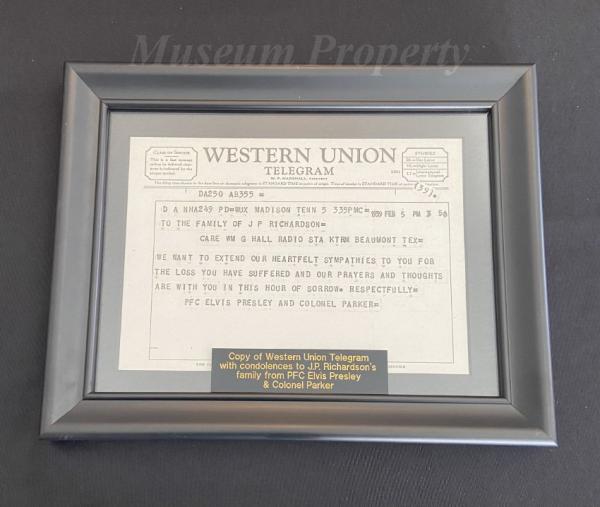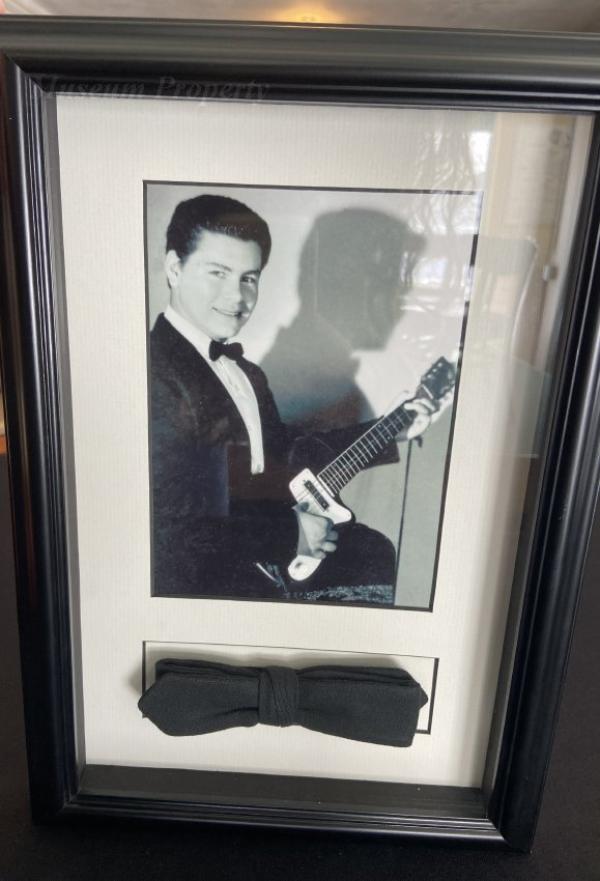| Step | Procedure | Time | Differentiation plan / Additional Information |
|---|
| 1 | To begin, use the K-W-L chart to record what students KNOW and what they WANT to know about Buddy, Ritchie, and The Big Bopper. At the end of the lesson, you can revisit the chart and record what you've LEARNED. | 5min. | | | 2 | Extension Ideas: Life in the 1950's: Before learning about Buddy Holly, Ritchie Valens, and The Big Bopper, share with students what life was like in the 1950's. Talk about inventions, fashion, and differences between life in the 50's compared to today. Create a picture board. Have two categories: '1950's & Today' and have students place the pictures under the appropriate categories. Use the picture cutouts on the following pages. Or, use the accompanying PowerPoint presentation slide '1950's & Today' to observe what life was like in the 1950's. Questions to consider : (Students can individually write in journals, work in small groups, or discuss as a class). - How do you think life changed when the (telephone, television, computer, cell phone, smart phone, etc.) was invented?
- What do you think the main form of communication was in the 1950's?
| 5-10min. | | | 3 | Extension Ideas: School in the 1950's: To help students further understand what life was like in the 50's, share these fun facts about school during that time. - Most kids lived within walking distance of their school, so many of them walked to school instead of taking the bus.
- Computers and the internet were not around yet, so books were the main source of research.
- Typewriters were used to write papers, and teachers wrote on blackboards with chalk, there were no smart boards or whiteboards.
- Filmstrip projectors were used to show a video in class.
- Baseball and basketball were the only sports played in school.
- Field trips were incredibly rare.
| 3min. | | | 4 | Meet Buddy Holly: Share the following facts about Buddy Holly's life with students. Then, we will take a closer look at Buddy Holly's childhood, his musical influences, and how he shaped Rock n' Roll as we know it today. Display Buddy Holly's photos with the Buddy-Bopper Bamba PowerPoint, or use Google images. - Buddy Holly was born & raised in the town of Lubbock, Texas.
- The first instrument Buddy Holly learned how to play was the piano.
- Buddy grew up in a very musical family. His mother and all of his siblings either played a musical instrument or sang.
- Buddy Holly was a Rock n' Roll AND fashion icon during his time in the 1950's.
- Buddy Holly opened for Elvis Priestly three times, which encouraged him peruse a career in music.
- Buddy Holly wrote many of his own songs.
| 2min. | | | 5 | Buddy's Childhood: Buddy Holly was born on September 7th, 1936 in Lubbock, Texas. He was the fourth child for his farther Lawrence Odel Holley and mother Ella Pauline Drake. The birth name given to him was Charles Hardin Holley, although from his early childhood he was nicknamed Buddy. Buddy was the youngest of four siblings. He had two older brothers, Larry and Travis, and one older sister, Patricia Lou. Buddy was born during the Great Depression, when the world economy crashed and many people lost their jobs. Buddy's father changed jobs several times during this time, and the Holley family moved residences several times within Lubbock. Buddy grew up in a very musical family. All of his siblings as well as his mother either played a musical instrument or sang. Oftentimes, the Holley's would play music together at various events such as church & talent shows. At age 11, Buddy took piano lessons for one year, but decided to stop and switch to guitar after seeing his brother and fellow classmates playing guitar. Buddy desired a guitar similar to the one that his brother Travis had. His parents found one at a local pawn shop and his brother Travis taught him how to play it. | 3min. | | | 6 | Buddy's Musical Influences: Buddy grew up listening to the music of Hank Williams, Jimmie Rogers, Hank Snow, Bob Wills, and the Carter family. The musical style that all of these artists played was country western. In high school, Buddy enjoyed listening to late-night radio stations that played blues and rhythm & blues. Buddy would tune in to distant radio stations which could only be heard at night when local stations ended. Buddy took both styles (country western and rhythm & blues) and blended them to make his own style. Buddy played music with his school mates from the time he was in elementary school. By the time he graduated from Lubbock, TX, he was already playing at local radio stations and live gigs in the area. Buddy decided to peruse a full-time career in music after seeing Elvis Presley perform live in Lubbock in 1955. He then opened for Elvis three times the same year. Buddy starting incorporating more rock n' roll into his style. When he signed with Decca Records the following year in 1956, they misspelled his last name as 'Holly' and the name stuck! | 3min. | | | 7 | Watch: Play the following video of Buddy Holly & The Crickets, or view Buddy, Bopper, Bamba PowerPoint Presentation, slide "Peggy Sue"
https://www.youtube.com/watch?v=bfu_gfPBPWc Ask students: How is this video different from today's videos?
Students may observe that the video is in black and white, that the picture is blurry, or that the sound quality isn't as clear. Remember that videos had not been around long, and were not as common in the 1950's. | 3min. | | | 8 | Listen: Listen to the following songs (or pick 1-2 from each list) and discuss the similarities and differences. The first list comes from artists that Buddy Holly grew up listening to, the second list are Buddy Holly's original songs, and the third list comes from bands that were influenced by Buddy Holly's music. Questions to consider: (Students can individually write in journals, work in small groups, or discuss as a class). - What instruments can you hear?
- Is the song fast or slow? To help you decide, try clapping or tapping along to the beat.
- How does the song make you feel? Is the song happy? Sad? Exciting? Does it change throughout the song?
- Are there parts of the song that repeat?
- What is the busiest part of the music?
- Can you hum the melody?
- Does the song have lyrics? If so, what do the lyrics mean? How do they work together with the music to create meaning?
- What instrument(s) are playing the rhythm?
- How have the songs changed over time?
Song List: Artists Who Influenced Buddy Holly: - Hank Williams, "Hey Good Lookin'" (1953)
- Jimmie Rodgers, "Waiting for a Train" (1928)
- The Carter Family, "Can the Circle Be Unbroken" (1935)
- Elvis Presley, "Jailhouse Rock" (1957)
- Bo Diddley, "Bo Diddley" (1955)
Buddy Holly's Songs: - Buddy Holly & the Crickets, "Words of Love'" (1957)
- Buddy Holly & the Crickets, "Peggy Sue" (1957)
- Buddy Holly & the Crickets, "Everyday" (1957)
- Buddy Holly & the Crickets, "It's So Easy" (1958)
- Buddy Holly & the Crickets, "Not Fade Away" (1957)
Artists Who Were Influenced by Buddy Holly: - The Beatles, "Words of Love'" (1964)
- The Beatles, "Love Me Do" (1963)
- The Beatles, "Please Please Me" (1963)
- The Rolling Stones, "Not Fade Away" (1964)
- Don McLean, "American Pie" (1971)
- The Hollies, "Long Cool Woman" (1971)
| 10min. | | | 9 | Buddy Holly's Legacy: For many reasons, Buddy Holly has been called one of the most influential pioneers of rock n' roll music. Buddy Holly played rock n' roll for only two short years, but the wealth of material he and the Crickets created in that time made a major impact on popular music. Buddy was an innovator who wrote his own material. He was among the first musicians to utilize brand new studio styles, like double-tracking. He and the Crickets also began the now normal rock-band line up of two guitars, bass, and drums. Buddy had even begun to experiment with orchestration. Between August 1957 and August 1958, Buddy Holly and the Crickets charted seven Top 40 singles. Buddy Holly was one of the first inductees into the Rock n' Roll Hall of Fame. In 2004, Rolling Stone magazine listed him as number 13 of the 100 Greatest Artists of All Time, and in 2008, Rolling Stone listed him as one of the 100 Greatest Singers of All Time. In 1958, Holly met and married Maria Elena Santiago. The two then moved to New York and started planning the future of their new family. Buddy's trademark horn-rimmed glasses also made him a fashion icon in his day. Many musicians felt comfortable wearing their glasses on stage after Buddy Holly did. His innovative musical style and engaging personality have influenced rock n' roll artists each and every decade. | 3min. | | | 10 | Meet J.P. 'The Big Bopper' Richardson: Share the following facts about The Big Bopper's life with students. Then, we will take a closer look at J.P.'s childhood, his musical influences, and how he shaped Rock n' Roll as we know it today! Display The Big Bopper's photos with the Buddy-Bopper Bamba PowerPoint, or use Google images. - Full name was Jiles Perry Richardson Jr.
- Born in Sabine Pass, TX
- He had several nicknames, including: J.P., Jape, and the one he is most known for, The Big Bopper.
- J.P. loved football, he was a lineman for his high school football team wearing #85.
- Before becoming a musician, The Big Bopper was a deejay.
- J.P. was also known for his big, boisterous voice.
| 1min. | | | 11 | The Big Bopper's Early Years: Jiles Perry Richardson Jr. was born on October 24th, 1930 in Sabine Pass, Texas. He was the oldest son for his father, Jiles Perry Richardson, and mother Elise (Stalsby) Richardson. They had two other sons, Cecil and James. J.P.'s father was an oil filed worker. The family moved to Beaumont, Texas in J.P.'s early years. J.P., or 'Jape' as he became known to family and friends, played as a lineman in his high school's football team, The Royal Purple, wearing number 85. He graduated from Beaumont high school in 1949. After high school, Jape went on to college in Beaumont where he found a job at a radio station. Beyond being a member of the college's band and choir, he also studied pre-law. In 1952, he married Adrian Fryon and had a daughter, Deborah. By 1957, after an assignment in the military, J.P. resumed his job as a deejay for KTRM, where he coined the name "The Big Bopper". Richardson had seen kids doing a dance called 'The Bob', and from this he named himself 'The Big Bopper'. | 3min. | | | 11 | The Big Bopper's Musical Influences: J.P. worked as a disk jockey, meaning that he introduced and played recorded popular music on the radio. J.P. was one of the first disk jockeys to play Elvis Presley's music on the radio. n May of 1957, The Big Bopper established a world record for continuous broadcasting. He stayed on the air for six days straight, spinning 1,821 records! J.P. had access to a wealth of material from countless musicians at his job at the radio station. During this time, he also began writing his own songs and was soon discovered my Harold Daily. In 1957, Bopper recorded "Chantilly Lace", which reached #6 on the pop chart and spent 22 weeks in the Top 40. Richardson was a gifted songwriter. During his career he wrote over 20 song, each with their own unique flare. "White Lightening" became George Jones first #1 country hit and Johnny Preston's "Running Bear" also climbed to #1. The Big Bopper's energetic voice and quirky sense of humor not only made him stand out from the crowd, but also created an interactive scene that listeners could be a part. | 3min. | | | 12 | Watch: Play the following video of The Big Bopper, or view Buddy, Bopper, Bamba PowerPoint Presentation, Slide "Chantilly Lace"
https://www.youtube.com/watch?v=4b-by5e4saI | 3min. | | | 13 | Listen: Listen to the following songs (or pick 1-2 from each list) and discuss the similarities and differences. The first list comes from artists that influenced The Big Bopper, the second list are The Big Bopper's original songs, and the third list comes from bands that were influenced by The Big Bopper's music. Questions to consider: (Students can individually write in journals, work in small groups, or discuss as a class). - What instruments can you hear?
- Is the song fast or slow? To help you decide, try clapping or tapping along to the beat.
- How does the song make you feel? Is the song happy? Sad? Exciting? Does it change throughout the song?
- Are there parts of the song that repeat?
- What is the busiest part of the music?
- Can you hum the melody?
- Does the song have lyrics? If so, what do the lyrics mean? How do they work together with the music to create meaning?
- What instrument(s) are playing the rhythm?
- How have the songs changed over time?
Song List: Artists Who Influenced The Big Bopper: - Little Richard, "Good Golly Miss Molly'" (1956)
- Hank Williams, "I'm So Lonesome I Could Cry" (1949)
- Screaming Jay Hawkins, "I Put a Spell On You" (1956)
- Ike Turner, "Rocket 88" (1951)
- Elvis Presley, "Hound Dog" (1956)
The Big Bopper's Songs: - The Big Bopper, "Chantilly Lace'" (1958)
- The Big Bopper, "Purple People Eater" (1958)
- The Big Bopper, "White Lightening" (1959)
- The Big Bopper, "Running Bear" (1959)
Artists Who Were Influenced by The Big Bopper: - George Jones, "Still Doin' Time'" (1981)
- The Beach Boys, "Barbara Ann" (1970)
- The Temptations, "My Girl" (1965)
- Dion, "Runaround Sue" (1961)
- Don McLean, "American Pie" (1971)
| 10min. | | | 14 | The Big Bopper's Legacy: The Big Bopper was an innovator. He is credited with coining the term "music video" in 1959 when he began recording music videos for his songs. The Big Bopper saw the future moving toward video technology and had plans to start producing videos on television. His plans included creating a specially designed jukebox that could play music videos. Through 1958, The Big Bopper signed on to many tours to promote his hit, "Chantilly Lace." He worked the Winter Dance Party tour into his schedule, along with Buddy Holly, Ritchie Valens, and Dion and the Belmonts. While he was on tour, his wife, Adrian, was pregnant with their second child. Jay P. Richardson was born 84 days after his father's death. Jay P. Richardson was known professionally as 'The Big Bopper Jr.' He was also a musician and performed around the world. Jay also toured the rout of the Winter Dance Party tour, performing on many of the same stages where his farther had performed. | 3min. | | | 15 | Meet Ritchie Valens: Share the following facts about Ritchie Valens life with students. Then, we will take a closer look at Ritchie's childhood, his musical influences, and how he shaped Rock n' Roll as we know it today! Display Ritchie Valen's photos using the Buddy, Bopper, Bamba PowerPoint, or use Google images. - Ritchie's full Name was Richard Steven Valenzuela.
- He was born in Pacoima, California.
- Ritchie joined a group called The Silhouettes at age sixteen.
- Ritchie was one of the first rock n' rollers to embrace his Latin heritage.
- Ritchie didn't speak Spanish, but he learned how to sing in Spanish.
- Ritchie was a self-taught musician.
- He was only seventeen years old when he played at the Surf Ballroom.
| | | | 14 | Ritchie Valens' Childhood: Richard Steven Valenzuela was born on May 13th, 1941 in Pacoima, California. His parents, Joseph Steven Valenzuela and Concepcion "Concha" Reyes, were from Mexico. He was the second of five siblings with older brother Bob Morales, younger sisters Connie and Irma, and younger brother Mario Ramirez. Ritchie was brought up hearing traditional Mexican mariachi music as well as flamenco guitar. He also enjoyed listening to R&B groups. Valenz expressed an interest in making music of his own by the time he was just five years old. He was encouraged by his father to take up guitar and trumpet, and later taught himself the drums. Though Ritchie was left-handed, he was so eager to learn the guitar that he mastered the traditional right-handed version of the instrument. Ritchie played music for his family and friends from a young age. When he was only 16 years old, he was invited to join a local dance band, The Silhouettes. He began as a guitarist, and when the main vocalist left the group, Valenz took over as lead singer. Not long after his first performances with the Silhouettes, Ritchie was discovered by Bob Keane, owner of a small record label in Hollywood. Bob recommended shortening his full name to Ritchie Valens. | 3min. | | | 15 | Ritchie Valens' Musical Influences: Ritchie Valens grew up listening to traditional Mexican music, but he also intently listened to R&B vocal groups such as the Crows, the Penguins, and the Drifters. Ritchie also listened to rock n' roll, and would often add new rifts and improvise on popular songs while he was performing. Before he shortened his name, he was called 'The Little Richard of San Fernando' due to his lively performances and the rock n' roll influence in his music. Ritchie soon started releasing his own music. "Donna" was a tribute to Ritchie's girlfriend, and quickly rose to #2 on the Billboard's singles chart. Ritchie's hit "La Bamba" was a high-energy reworking of an old Mexican wedding song. Ritchie learned the Mexican fiesta dance song from his cousins and put a rock n' roll spin on it, adding garage rock riffing and a new, enthusiastic solo. He was one of the first rock n' rollers to embrace his Latin heritage. | 2min. | | | 16 | Watch: Play the following video from the movie "La Bamba", or view Buddy, Bopper, Bamba PowerPoint Presentation, slide "La Bamba"
https://www.youtube.com/watch?v=jSKJQ18ZoIA Share with students: This is not actually Ritchie Valens in the video, it is from the movie that they made about his life, called "La Bamba" after his most famous song. Since videos were not as common in the 1950's, there are not many videos of Buddy Holly, The Big Bopper, or Ritchie Valens. | 3min. | | | 17 | Listen: Listen to the following songs (or pick 1-2 from each list) and discuss the similarities and differences. The first list comes from artists that Ritchie Valens grew up listening to, the second list are Ritchie Valens's original songs, and the third list comes from bands that were influenced by Ritchie Valens's music. Questions to consider: (Students can individually write in journals, work in small groups, or discuss as a class). - What instruments can you hear?
- Is the song fast or slow? To help you decide, try clapping or tapping along to the beat.
- How does the song make you feel? Is the song happy? Sad? Exciting? Does it change throughout the song?
- Are there parts of the song that repeat?
- What is the busiest part of the music?
- Can you hum the melody?
- Does the song have lyrics? If so, what do the lyrics mean? How do they work together with the music to create meaning?
- What instrument(s) are playing the rhythm?
- How have the songs changed over time?
Song List: Artists Who Influenced Ritchie Valens: - The Crows, "Gee'" (1953)
- The Penguins, "Earth Angel" (1954)
- The Drifters, "There Goes My Baby" (1964)
- Little Richard, "Lucille" (1957)
- The Penguins, "Hey Senorita" (1954)
Ritchie Valens' Songs: - Ritchie Valens, "Donna'" (1958)
- Ritchie Valens, "La Bamba" (1958)
- Ritchie Valens, "Come on Let's Go" (1958)
- Ritchie Valens, "We Belong Together" (1959)
Artists Who Were Influenced by Ritchie Valens: - Los Lobos, "La Bamba'" (1987)
- Los Lonely Boys, "Heaven" (2003)
- Los Lonely Boys, "More Than Love" (2003)
- The Beach Boys, "Good Vibrations" (1967)
- Led Zeppelin , "Going to California" (1971)
- Carlos Santana, "Smooth" (1999)
| 10min. | | | 18 | Ritchie Valens' Legacy: Ritchie Valens was a pioneer of Latin Rock and Chicano Rock music. He became nationally successful at a time when very few Lationos were in American rock and pop music. He is considered the first Latino to successfully crossover into mainstream rock. Though "Donna" made Ritchie a star, it was "La Bamba" that would become the song most recognized with the young musician. Ritchie will forever be remembered for inventing Latino rock with the way that he effortlessly blended traditional Latin American music with rock n' roll. In the course of his short life, Ritchie left behind a small but very influential body of work. He inspired many artists, including: Los Lobos, Los Lonely Boys, The Ramones, The Beach Boys, Carlos Santana, Jimi Hendrix, and Robert Plant (of Led Zeppelin). In 2019, the Valens version of "La Bamba" was selected by the U.S. Library of Congress for preservation in the National Recording Registry as "culturally, historically, and aesthetically significant". He was inducted into the Rock n' Roll Hall of Fame in 2001. | 3min. | | | 19 | The Winter Dance Party Tour: In January, 1959, Buddy Holly, Ritchie Valens, J.P. “The Big Bopper” Richarson, Dion and the Belmonts, Frankie Sardo, Waylon Jennings, Tommy Allsup and Carl Bunch set out on a 24 day tour barnstorming the Midwest. It would become the most infamous tour in rock n' roll history. The tour was very unorganized. Shows were scheduled hundreds of miles apart and caused the musicians hours of extra travel time on their tour bus. The bus also had a broken heater, and it was so cold that Buddy Holly's drummer, Carl Bunch, had to be hospitalized for frost bite during the tour. At the Surf Ballroom, you can see pictures of Buddy Holly drumming, as they all took turns filling in for each other after Carl left the tour. Due to the harsh conditions on the bus, by the time the tour had gotten to Clear Lake, Buddy Holly decided to charter a plane for himself and his band members, Waylon Jennings and Tommy Allsup. At the last minute, Jennings gave up his seat to The Big Bopper (who had the flu) and Tommy Allsup lost his seat to Ritchie Valens in a coin flip. The performance in Clear Lake was electric and the music brought a joy that would remain forever in the hearts and minds of all who attended. It was a night that burned bright with some of rock n' roll’s greatest songs and its brightest stars…and ended with the unthinkable. After their performance at the Surf Ballroom, Buddy Holly, Ritchie Valens, and J.P. “The Big Bopper” Richardson, were killed when their plane crashed shortly after taking off from the nearby Mason City Municipal Airport. The day became known around the word as 'The Day The Music Died.' | 4min. | | | 20 | Be sure to point out how messy the Winter Dance Party tour map was. They zig-zagged all over the place! View the tour map on Buddy-Bopper-Bamba PowerPoint, or Google the image. | 1min. | | | 21 | Winter Dance Party Tour Activity: Share the original Winter Dance Party poster with students. Pass out the activity sheet: Winter Dance Party Poster. This activity can be completed individually or as a class. Submit your poster mock-ups for a chance to have it created into a life-size poster! One poster will be selected per group submission. The life-size poster will then be returned to you to hang up and enjoy! | 10min. | | | 22 | The Surf Ballroom Today: To many, the Surf Ballroom is an American cultural icon as well as an important historical landmark. The Surf got its name (and design) from the desire of the original owners to create a ballroom that resembled an ocean beach club. The murals on the back walls were hand-painted to depict pounding surf, swaying palm trees, sailboats and lighthouses. The stage is surrounded by palm trees and the ceiling is painted dark blue to resemble the night sky. The gain of the wood was even selected to resemble a sandy beach. On January 27, 2009, the Rock and Roll Hall of Fame and Museum (Cleveland, Ohio) dedicated the Surf Ballroom as a historic rock n' roll landmark as part of the Museum's ongoing Landmark Series, which identifies locations in America that are significant to the origins and development of rock and roll. The plaque reads: "There are few buildings in existence today that represent a complete shift in our musical history. As the last concert venue for Buddy Holly, Ritchie Valens and J.P. "The Big Bopper" Richardson, the Surf is the bedrock of where the sound and attitude of rock and roll changed forever." Countless internationally known musicians have traveled to Clear Lake, IA to play at the Surf Ballroom to pay tribute to the fallen starts, as their music influenced many artists throughout history. The Surf is that rare place that new memories can be created while being apart of history. Although the Surf Ballroom with forever be associated with The Day the Music Died, the Surf Ballroom is where the music has always lived, and continues to live. Share photos of the Surf Ballroom with students, either with the Buddy, Bopper, Bamba PowerPoint, Google images, or the Surf Ballroom website! | 5min. | |
|
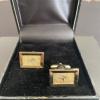 2021.002.004
2021.002.004

